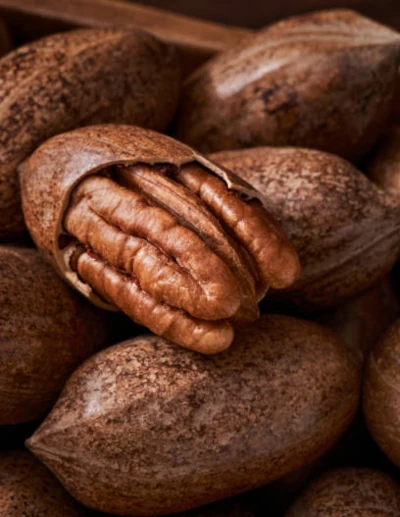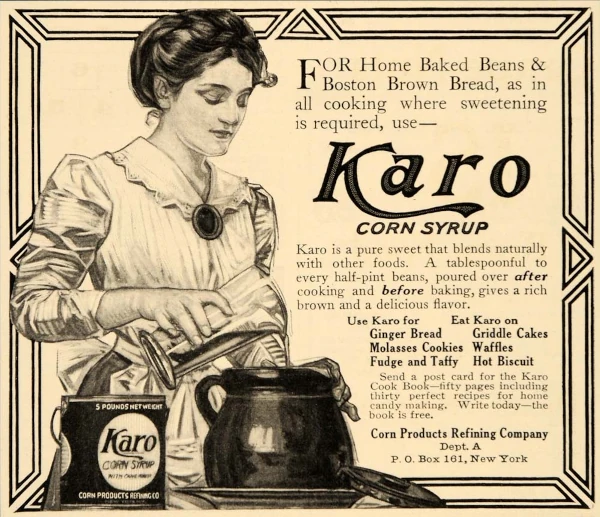Classic Southern Pecan Pie

There are few desserts that speak to the soul of Southern hospitality quite like a perfect pecan pie. This beloved treasure has graced holiday tables and Sunday suppers across the South for generations, and for good reason! With its flaky, buttery crust and that gloriously gooey filling studded with crunchy pecans, each bite offers a perfect harmony of textures and sweet, nutty flavors that simply can't be matched. I've been baking this particular recipe for nearly five decades, and it never fails to bring smiles and requests for seconds!
What makes this pecan pie recipe special is its perfect balance of sweetness and depth of flavor. The traditional corn syrup base is enhanced with a touch of bourbon (optional, but highly recommended for the adults at your table!) that adds a subtle complexity without overwhelming the star of the show—those beautiful pecans. Don't be intimidated if you've never made a pecan pie before—this straightforward recipe delivers spectacular results that will have everyone thinking you've been baking all your life. It's perfect for Thanksgiving and Christmas, of course, but why wait for a holiday to enjoy this Southern classic?

Ingredients
1 9-inch unbaked pie crust (homemade or store-bought) 1 cup light corn syrup 1 cup granulated sugar 3 large eggs, lightly beaten ⅓ cup unsalted butter, melted and cooled 1 teaspoon pure vanilla extract ¼ teaspoon salt 1½ cups pecan halves 1 tablespoon bourbon
Method
- 1. Preheat your oven to 350°F (175°C). If using a homemade crust, roll it out and place it in a 9-inch pie plate, crimping the edges decoratively. If using store-bought, unwrap and place in pie plate according to package directions.
- 2. In a large mixing bowl, whisk together the corn syrup, sugar, eggs, melted butter, vanilla extract, salt, and bourbon (if using) until the mixture is smooth and well combined.
- 3. Gently fold in the pecan halves, ensuring they're evenly coated with the syrup mixture. For a more elegant presentation, you can reserve about 1/2 cup of pecans to arrange on top of the filling in a circular pattern.
- 4. Pour the filling into the unbaked pie crust. If you reserved pecans, arrange them on top now. Place the pie on a baking sheet (to catch any potential overflow) and bake for 50-55 minutes, or until the center is just set but still has a slight jiggle.
- 5. Allow the pie to cool completely on a wire rack for at least 2 hours before slicing. This cooling time is crucial for the filling to set properly. Serve at room temperature with whipped cream or vanilla ice cream.

The Rich History of Pecan Pie

Pecan pie, beloved as it is throughout the American South, has a surprisingly recent history compared to many traditional desserts. The story of this iconic dessert begins with the pecan itself, a nut deeply rooted in North American history long before European colonization.
Ancient Indigenous Heritage
Pecans hold a special place in Native American culture and sustenance dating back at least 8,000 years. The word "pecan" derives from the Algonquian word "paccan," which was used to describe nuts requiring a stone to crack. Indigenous peoples, particularly those in the Mississippi Valley region including the Caddo, Cherokee, Comanche, and Creek nations, relied heavily on these nutritious nuts as a concentrated source of calories and essential nutrients during harsh winters.
Native Americans not only harvested wild pecans but developed sophisticated methods for their use and preservation. They created a nutritious milk-like drink by grinding pecans with water, developed techniques for extracting pecan oil, and incorporated the nuts into various food preparations, including a dish known as "powcohicora" – a mixture of corn and pecan meal that may be considered an ancestral precursor to modern pecan dishes.
The indigenous relationship with the pecan tree went beyond mere sustenance. Many tribes planted and tended pecan groves, understanding the trees' long-term value to their communities. They conducted intentional burns to clear competing vegetation around pecan groves and selectively gathered nuts from trees that produced the most desirable characteristics – an early form of agricultural selection that influenced the development of the large, thin-shelled pecans we enjoy today.
From Indigenous Food to Colonial Crop
When European settlers arrived, they quickly recognized the value of the pecan. Thomas Jefferson was so impressed with the nut that he planted pecan trees at Monticello and shared them with George Washington for planting at Mount Vernon. By the early 19th century, commercial pecan orchards began to appear throughout the South, though the first successful grafting of pecan trees (which allowed for consistent quality) wasn't achieved until the 1840s by a Louisiana slave named Antoine.
The Birth of Pecan Pie

Despite the long history of the pecan nut itself, pecan pie as we know it today is a relatively modern invention. The first documented pecan pie recipes appeared in Texas cookbooks around the 1870s and 1880s, though these early versions were quite different from today's standard – they often featured a custard-like filling that was less sweet and used no corn syrup.
A significant milestone in pecan pie history came in 1898 when a woman in St. Louis submitted what might be the first recipe resembling modern pecan pie to a church charity cookbook. This version included a filling with eggs, sugar, and pecans, though still without corn syrup.
The Karo Revolution
The game-changer came in the 1930s when the makers of Karo corn syrup began printing a pecan pie recipe directly on their product's label. This brilliant marketing move by the Corn Products Refining Company transformed pecan pie from a regional specialty into a national dessert sensation. The Karo recipe – featuring corn syrup, sugar, eggs, vanilla, and pecans – became the standard against which all other pecan pies would be measured.
The timing of this promotion was particularly significant. During the Great Depression, the pie gained widespread appeal as corn syrup was more affordable than sugar, and in many Southern areas, pecans could be harvested from backyard or wild trees at no cost. This economic advantage, combined with the pie's rich, satisfying nature, cemented its place in American cuisine.
Regional Variations and Evolution
As pecan pie spread across America, regional variations emerged. In Louisiana, sugar cane syrup or molasses often replaced corn syrup. Some Texas versions incorporated chocolate. In Kentucky and other parts of the Upper South, bourbon became a popular addition. Modern interpretations might include maple syrup, brown butter, or various spices like cinnamon and nutmeg.
Today, pecan pie remains a quintessential Southern dessert, particularly associated with Thanksgiving and Christmas celebrations. It has become so iconic that several Southern states, including Texas, Alabama, and Arkansas, have engaged in friendly disputes over which can claim to be the true home of pecan pie. In 2013, Texas officially designated pecan pie as its state pie, acknowledging the dessert's cultural significance.
The journey from indigenous food source to beloved American dessert reflects the complex cultural exchanges that have shaped Southern cuisine. What began as an important survival food for Native Americans has transformed through European settlement, African American culinary influence, and commercial food production to become one of America's most recognizable desserts – a sweet testament to the rich cultural tapestry of American culinary traditions.
The Secret to Perfect Pecan Pie
Creating a truly outstanding pecan pie requires attention to a few key details that can elevate this simple dessert to extraordinary heights:
- Toast Your Pecans: Lightly toasting the pecans before adding them to the filling enhances their natural flavor and helps them maintain some crunch even after baking.
- Don't Overmix: Gently fold the pecans into the filling mixture rather than vigorously stirring, which can incorporate too much air and lead to a less dense filling.
- Prevent Crust Sogginess: For the crispest bottom crust, you can "blind bake" your pie crust for about 10 minutes before adding the filling, or simply brush it with a light coating of beaten egg white.
- The Jiggle Test: Your pie is done when the center still has a slight jiggle but doesn't appear liquid. It will continue to set as it cools, so avoid overbaking which can make the filling grainy.
- Cool Completely: Patience is key! Allow your pie to cool fully (at least 2 hours) before slicing to ensure clean cuts and proper texture.
- Storage Wisdom: Pecan pie actually tastes better the day after baking as the flavors have time to meld. Store it at room temperature for up to 2 days or refrigerate for longer storage.
While classic pecan pie is perfect in its simplicity, there are countless delicious variations to explore. Some bakers add a layer of chocolate at the bottom, while others incorporate warm spices like cinnamon and nutmeg into the filling. In Louisiana, you might find pecan pie enriched with cane syrup instead of corn syrup, lending a deeper, more complex sweetness. And across the modern South, creative bakers incorporate everything from bourbon to maple syrup, molasses to brown butter to put their own stamp on this beloved dessert.
The joy of pecan pie extends beyond its delicious taste to the memories it creates. For many families, the appearance of pecan pie signals the beginning of holiday celebrations and evokes memories of gatherings around the table. Perhaps that's why this relatively young dessert has achieved such iconic status – it's not just a pie, but a slice of Southern heritage, hospitality, and home.